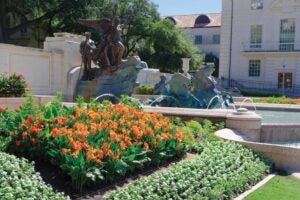The recently released 2020 census data highlight both concerns and opportunities embedded in demographic transitions. Overall population growth slowed to a rate not seen since the Great Depression, according to the data. And, for the first time, the growth that occurred was made up primarily of this nation’s diverse groups.
Latinos grew by 23%, Asians and Asian Americans/Pacific Islanders by 36% and the Black population by 6%. The population represented by non-Hispanic whites also declined for the first time — from 64% in 2010 to 58% in 2020. If this group continues to age, experience lower life expectancy and have fewer children, non-Hispanic whites could become a minority group by 2030. Further, the relative youth of non-white groups mean that shoring up the nation’s tax base and supporting national entitlement programs will fall to them.
Although the movement toward a majority-minority nation has been long in the making, it is still unclear how the country will adjust, respond and benefit. A good start is to reinstall American history and civics courses for all students in K-12 if we are to forestall great civic disorder among disparate groups.
Despite having its share of trauma and conflicts, the United States has been the global exemplar of a nation drawing from the great talents and energies of its persistent influx of immigrants from around the world. But can this continue? Efforts to curtail refugee flows, restrict ethnic studies programs, build border walls, scapegoat ethnic groups, and otherwise focus on the drawbacks of rapid diversity growth and immigration have led to a level of nativism not seen since the anti-immigrant sentiment that led to the restrictive immigration laws of the 1920s.
Conservatives, rural dwellers and working-class whites have legitimate concerns about keeping their jobs and maintaining their values and norms of civic participation as the nation changes. Most liberals and progressives welcome diversity and immigration but fail to acknowledge that newcomers have a responsibility to integrate into the civic values of the nation, learn English, become U.S. citizens, adhere to the values and expectations of the country’s founding documents, and avoid balkanized communities of ethnic, racial and immigrant enclaves. Few have spoken out about the responsibilities of all groups — immigrants, minorities and ethnic groups — to commit to this nation’s values and citizenship duties.
As the United States becomes increasingly heterogenous in the third decade of the 21st century, we will need to imagine how to reclaim a common purpose and public benefit for all Americans. What can bring together so many disparate groups? How do we build national cohesion, a common social contract that nonetheless enables each group to be proud of its heritage?
Several potential directions stand out: First, we need to implement a national draft of civic duty for all young people (which some might fulfill through military service). Second, teach K-12 students the lessons of U.S. history and civic engagement and how fraternal, social and civic clubs, as well as community participation, engage all individuals and groups in giving back to their communities. Third, given the population changes of an aging society in Texas and the U.S., adding a model curriculum on demography of diversity and longevity aimed at fostering tolerance would help others better understand the realities of a new world order.
Whatever course we choose in adjusting to the unprecedented diversity and demographic changes we now face, we must focus on a less partisan and ideological approach if we are to avoid civic strife and if we are to once again reclaim the mantle of a nation that embraces these changes to revitalize itself as it has done repeatedly during the past 250 years. All this will play out in just the next 20 years, and we all have a stake in the outcome.
Jacqueline L. Angel is the Wilbur J. Cohen professor of health and social policy and professor of sociology at The University of Texas at Austin.
Fernando M. Torres-Gil is a professor and director of the Center for Policy Research on Aging at the University of California, Los Angeles.
A version of this op-ed appeared in the San Antonio Express News, Austin American-Statesman, Waco Tribune Herald, and the Abilene Reporter News.




